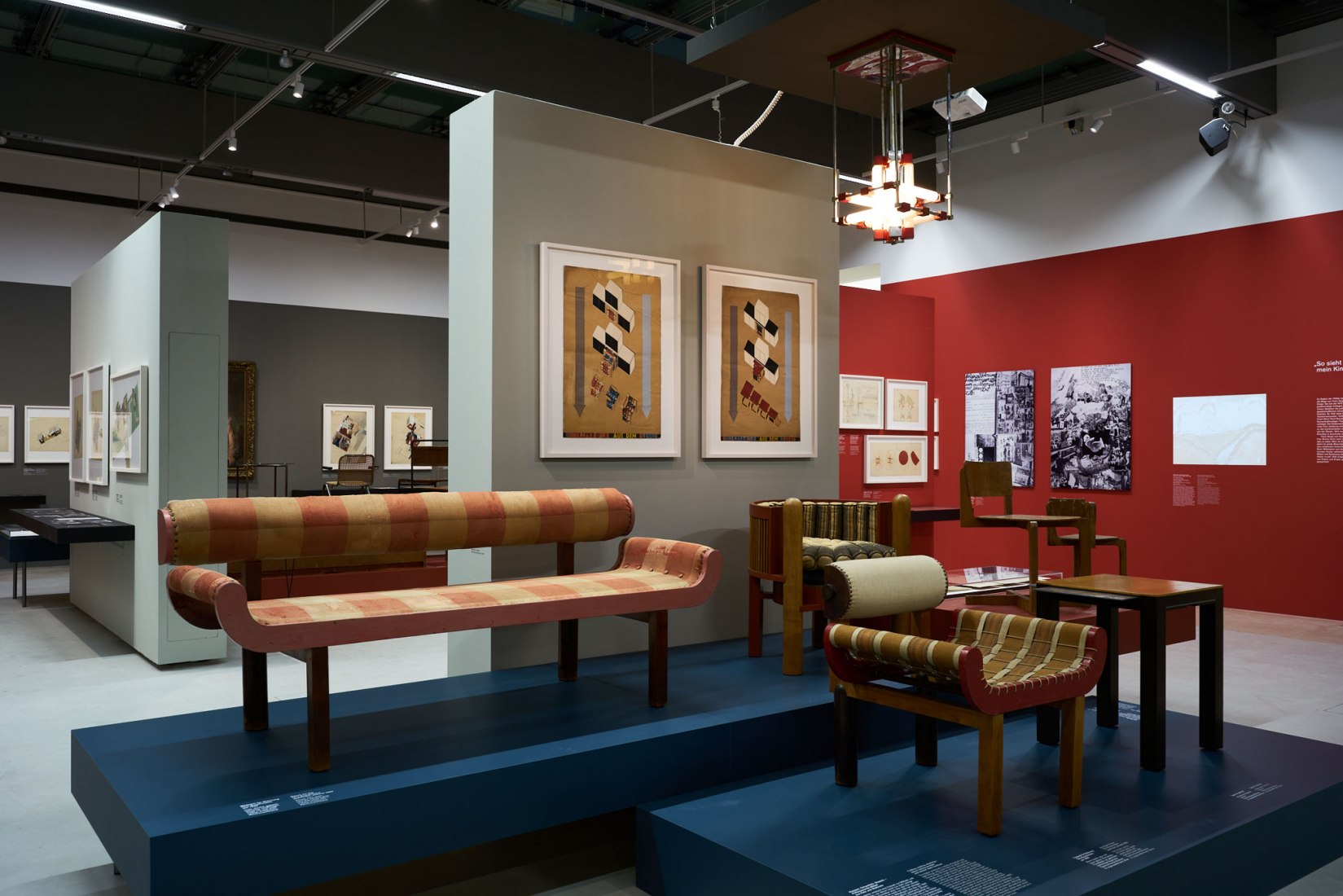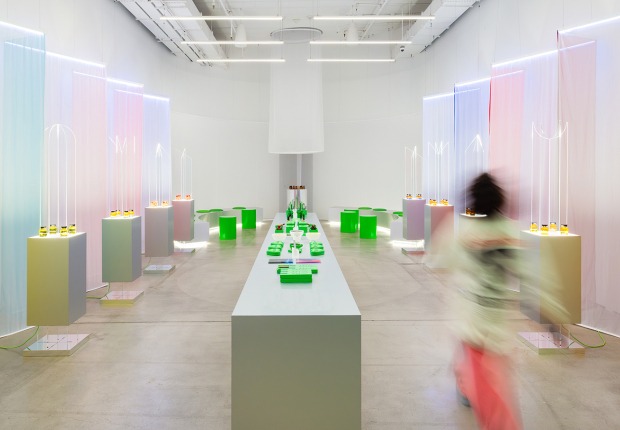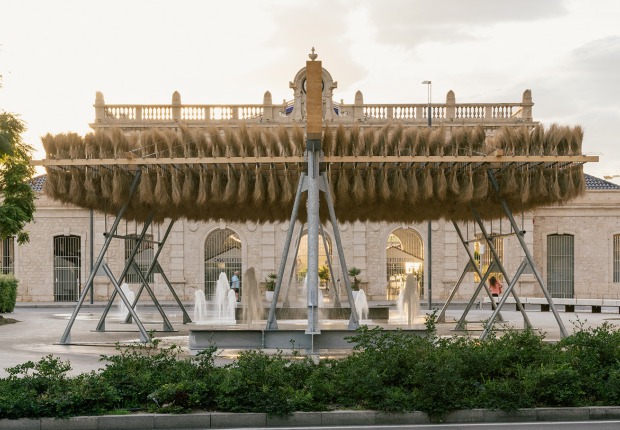The last of the exhibitions, on the work of Friedl Dicker- Brandeis, is held at the Wien Museum MUSA, until March 26, "Studio Bauhaus, Vienna. Friedl Dicker and Franz Singer" focusing on analyzing his time at the Bauhaus and presenting his joint work with the also architect Franz Singer with al Finishing his studies in 1923, he founded the Werkstätten Bildender Kunst or "Visual Arts Workshops" in Berlin together with Franz Singer, a former Bauhaus colleague, to later create a joint studio in Vienna.
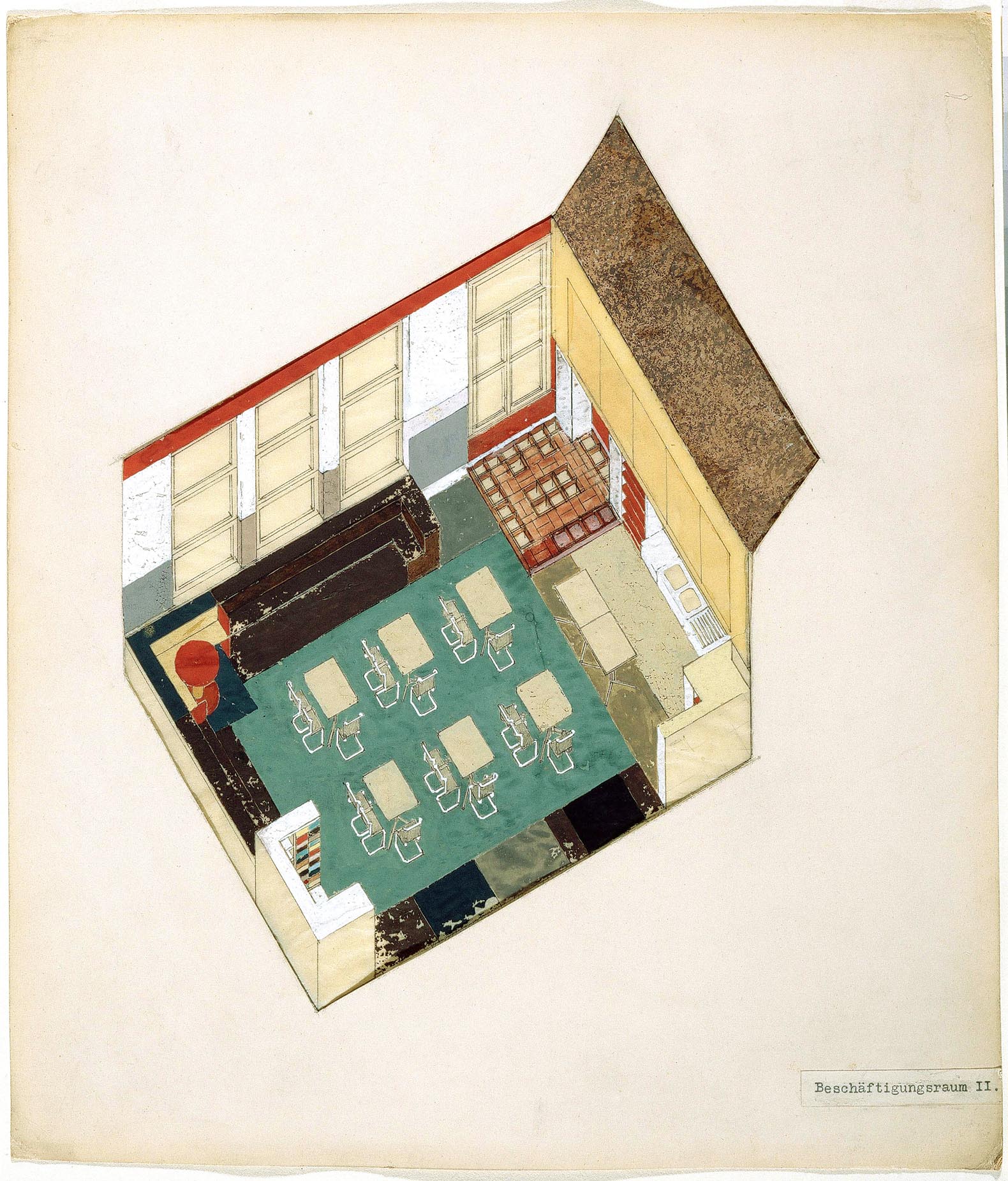
Activity Room in the Municipal Montessori Kindergarten at the Goethehof, around 1931. Bauhaus-Archiv Berlin.
The exhibition presents a huge compilation of original material with axonometric drawings, models, furniture, photographs and numerous collages. As Wien Museum MUSA curator Andreas Nierhaus comments, the compilation has been a laborious process given that "The studio's most important projects were destroyed during the Nazi period, but its archive was miraculously preserved."
Among the works on display, two projects to which we paid special attention in 2019 stand out: Hans Heller's private tennis club with little-known plans and photographs, showing the interesting abstract composition that makes the central cylinder the protagonist that would later crystallize, and never better. said, in the project for the residence of Countess Hildegard von Auersperg where the staircase with curved glass walls stands out in a special way, of which plans and photographs are also presented.
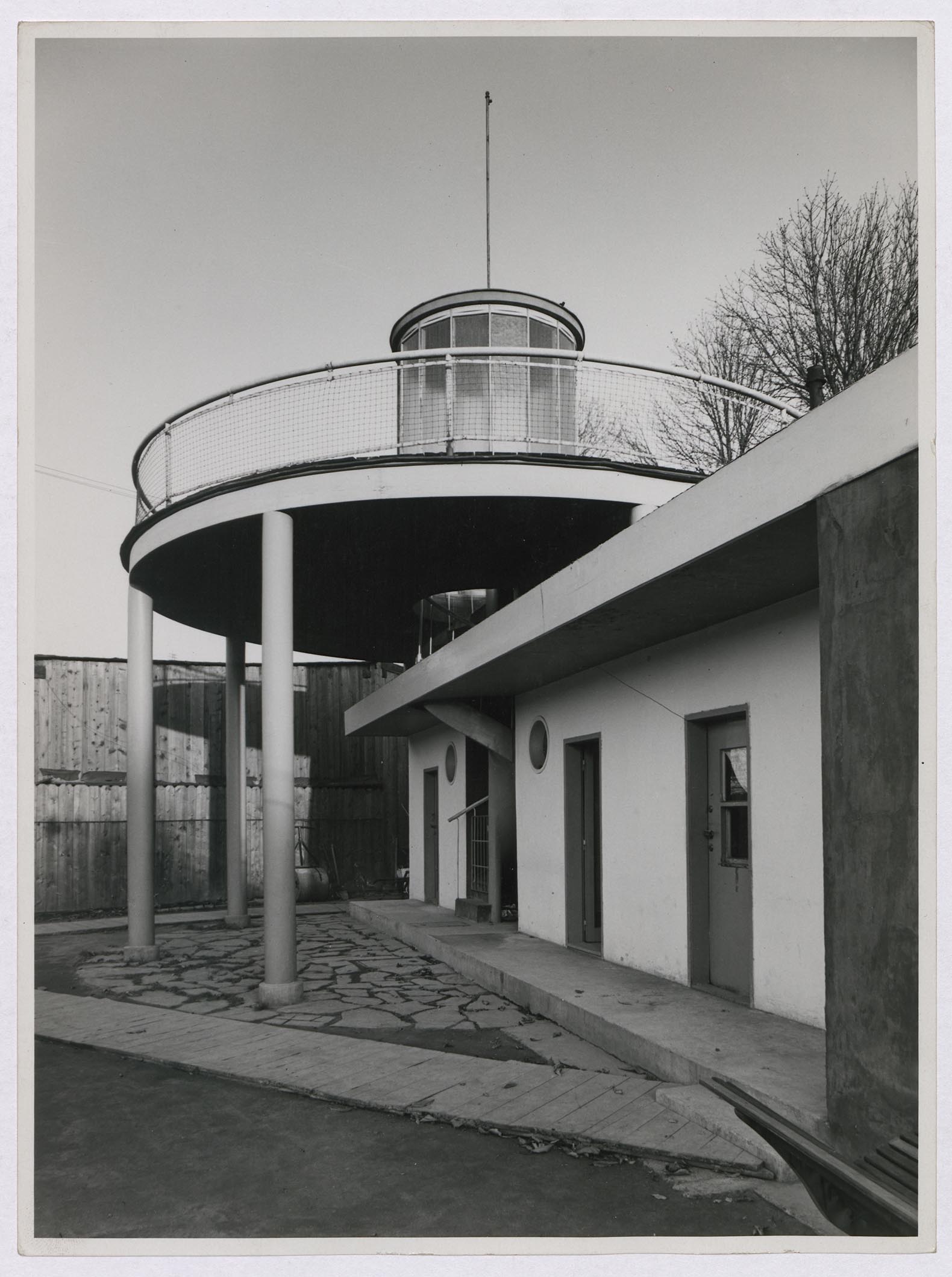
Tennis Club House Heller, 1928. Fotograph by Pfitzner-Haus. Bauhaus-Archiv Berlin.
The exhibition also features completed projects such as Lore Kriser & Co's couture salon and a Montessori kindergarten. Singer and Dicker-Brandeis worked for clients belonging to a new modern bourgeoisie, mostly Jewish intellectuals and artists who sought to present themselves through modern spaces that differentiated them from traditional styles.
The convulsive situation in the 1930s complicated the professional and affective relationship of the Singer and Dicker-Brandeis couple. Dicker-Brandeis was associated with the Communist Party and she would be jailed for forging passports for her colleagues. Following her release from prison, Dicker-Brandeis would increase her commitment by designing propaganda posters for the Communist Party. His black and white photo collages criticized the living conditions of the working class, warned of the imminent Nazi threat and condemned the consequences of the crisis of capitalism as ways that facilitated totalitarianism, the arrival of the New Deal in the United States after the crisis of 1929 was a good example.
Her large-format Dada photomontages used images of Adolf Hitler, (which can be seen on one of the eight glass plate negatives on display), while others depicted the restrictive role of women in industrial society.
The growing and suffocating rise of fascism in Austria would end up causing the separation of the couple. Dicker-Brandeis would move to Czechoslovakia in 1933, where she married her cousin, Pavel Brandeis. Singer move to London in 1934 where he would find a foothold and continue his work.
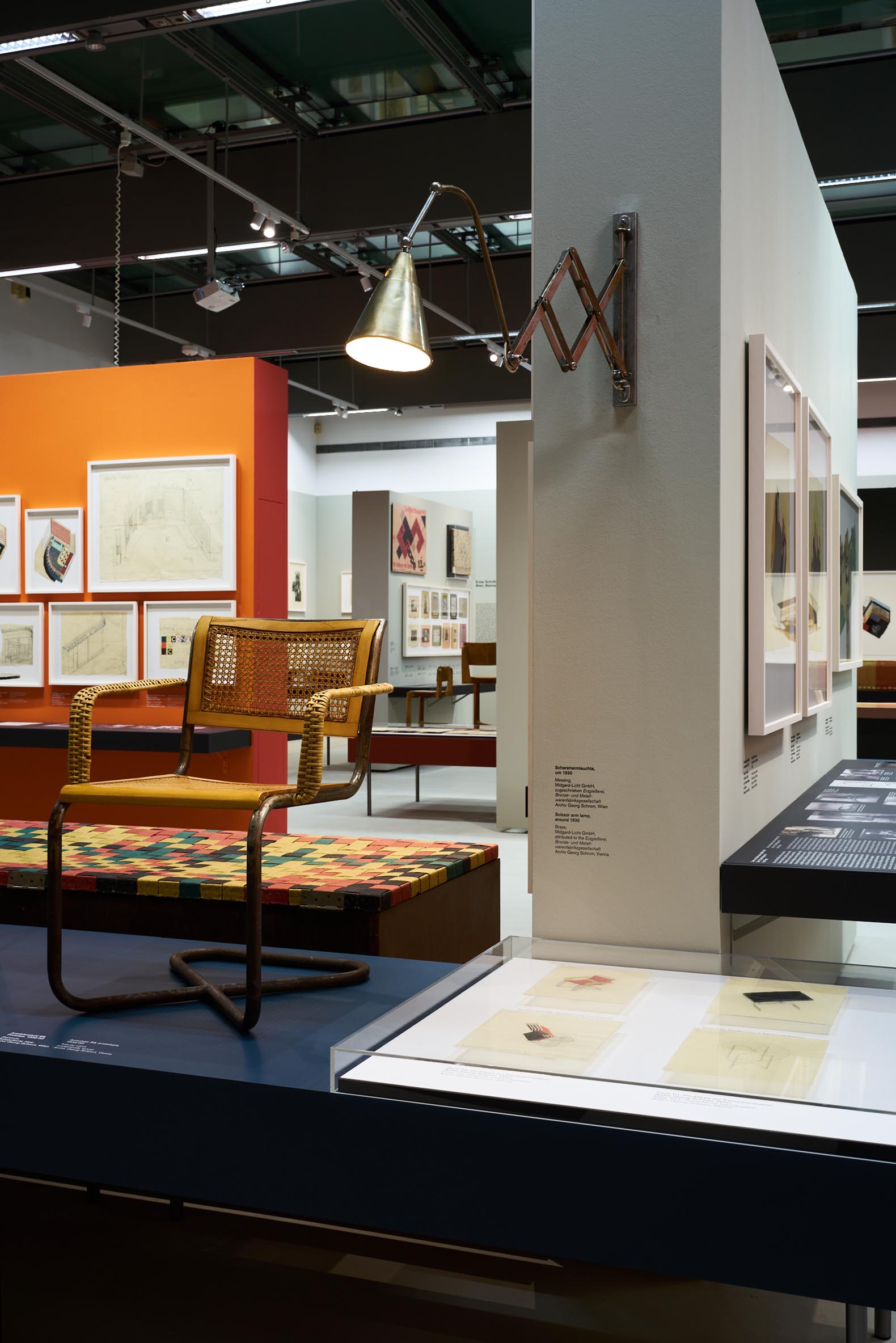
Wien Museum MUSA, Atelier Bauhaus, Wien. Friedl Dicker und Franz Singer, Ausstellungsansicht, 2022. Photograph by TimTom.
Friedl Dicker taught at the school and continued to create avant-garde art in Prague, sharing his knowledge of how to use art as therapy, and also helping some of his students, children fleeing from Nazi Germany, cope with their traumatic experiences.
Friedl Dicker would be deported to the Theresienstadt concentration camp in 1942, where she continued to teach children drawing. In October 1944 she tries to reunite with her husband and she volunteers to make the trip to Auschwitz where she was murdered. Several suitcases would be left behind from this tremendous period with almost 5,000 children's drawings and collages, a reflection of her generosity and also of her enormous brilliance.

Activity Room in the Municipal Montessori Kindergarten at the Goethehof, around 1931. Bauhaus-Archiv Berlin.
The exhibition presents a huge compilation of original material with axonometric drawings, models, furniture, photographs and numerous collages. As Wien Museum MUSA curator Andreas Nierhaus comments, the compilation has been a laborious process given that "The studio's most important projects were destroyed during the Nazi period, but its archive was miraculously preserved."
Among the works on display, two projects to which we paid special attention in 2019 stand out: Hans Heller's private tennis club with little-known plans and photographs, showing the interesting abstract composition that makes the central cylinder the protagonist that would later crystallize, and never better. said, in the project for the residence of Countess Hildegard von Auersperg where the staircase with curved glass walls stands out in a special way, of which plans and photographs are also presented.

Tennis Club House Heller, 1928. Fotograph by Pfitzner-Haus. Bauhaus-Archiv Berlin.
The exhibition also features completed projects such as Lore Kriser & Co's couture salon and a Montessori kindergarten. Singer and Dicker-Brandeis worked for clients belonging to a new modern bourgeoisie, mostly Jewish intellectuals and artists who sought to present themselves through modern spaces that differentiated them from traditional styles.
The convulsive situation in the 1930s complicated the professional and affective relationship of the Singer and Dicker-Brandeis couple. Dicker-Brandeis was associated with the Communist Party and she would be jailed for forging passports for her colleagues. Following her release from prison, Dicker-Brandeis would increase her commitment by designing propaganda posters for the Communist Party. His black and white photo collages criticized the living conditions of the working class, warned of the imminent Nazi threat and condemned the consequences of the crisis of capitalism as ways that facilitated totalitarianism, the arrival of the New Deal in the United States after the crisis of 1929 was a good example.
Her large-format Dada photomontages used images of Adolf Hitler, (which can be seen on one of the eight glass plate negatives on display), while others depicted the restrictive role of women in industrial society.
The growing and suffocating rise of fascism in Austria would end up causing the separation of the couple. Dicker-Brandeis would move to Czechoslovakia in 1933, where she married her cousin, Pavel Brandeis. Singer move to London in 1934 where he would find a foothold and continue his work.

Wien Museum MUSA, Atelier Bauhaus, Wien. Friedl Dicker und Franz Singer, Ausstellungsansicht, 2022. Photograph by TimTom.
Friedl Dicker taught at the school and continued to create avant-garde art in Prague, sharing his knowledge of how to use art as therapy, and also helping some of his students, children fleeing from Nazi Germany, cope with their traumatic experiences.
Friedl Dicker would be deported to the Theresienstadt concentration camp in 1942, where she continued to teach children drawing. In October 1944 she tries to reunite with her husband and she volunteers to make the trip to Auschwitz where she was murdered. Several suitcases would be left behind from this tremendous period with almost 5,000 children's drawings and collages, a reflection of her generosity and also of her enormous brilliance.












